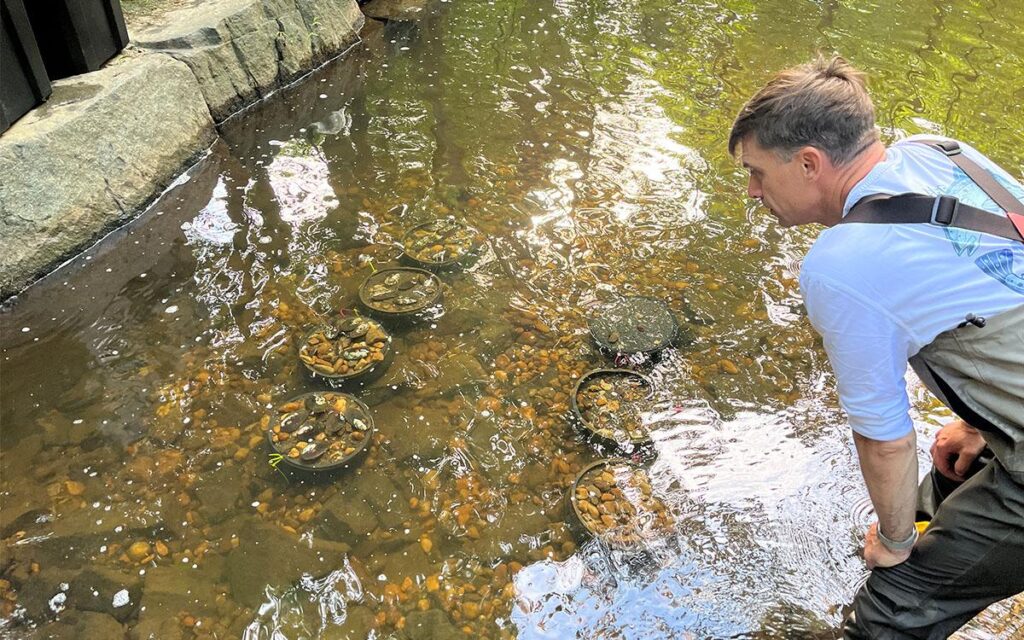Researchers Use Native Mussels to Revitalize Northern Virginia Streambeds
Wed, 2024-10-02 02:00

A researcher inspects buckets of freshwater mussels waiting to be released into their new home. | Photo courtesy of Ashley L. Conti and Colby University
Aquatic ecologist Denise Bruesewitz releases freshwater mussels into a Northern Virginia streambed, hoping these unassuming mollusks will combat the rapid degradation of North America’s freshwater ecosystems. “They’re fascinating,” Bruesewitz, a Colby College professor, remarked.
Urban expansion has significantly impacted North America’s waterways, narrowing streams and eroding riverbanks. Rainfall now leads to rapid water surges, or “flashes,” which carry pollutants into streams, harming marine ecosystems.
Pollutants flow into estuaries, creating algae blooms that reduce oxygen levels. The Chesapeake Bay, the largest U.S. estuary, exemplifies this issue, repeatedly receiving low environmental health scores.
Local organizations have been physically restoring streams for 15 years, adding boulders and cobblestones to prevent erosion. Bruesewitz’s team focuses on reducing pollution by introducing native freshwater mussels, which act as natural filters.
These bivalves can filter up to 15 gallons of water daily, removing contaminants and metabolizing some pollutants. They are particularly effective against excess nitrogen, which feeds toxic algal blooms.
The southeastern U.S. hosts over 270 mussel species, but many face threats. Excessive pollution and historical harvesting have left approximately 65% of U.S. mussel species threatened, with 30 already extinct.
Last summer, Bruesewitz’s team reintroduced 1,500 adult Eastern elliptio mussels to two Reston, Virginia rivers. This builds on 2019 research where mussels were tested in restored streams. “We wanted them to find a spot where they were happiest,” said Bruesewitz.
The goal is to introduce 35,000 mussels from six species over five years to enhance filtration capacity.
Bruesewitz and collaborator Jess Jones from Virginia Tech have monitored the mussels monthly. As of June 2024, the mussels have a 98.2% survival rate.
Chris Eads, a mussel specialist at North Carolina State University, lauds the project as a promising test case for mussel reintroduction. However, challenges remain in ensuring mussels can reproduce successfully, as they rely on specific host fish.
Future plans include translocating host fish if necessary. Carla Atkinson, an aquatic ecologist at the University of Alabama, notes that while bivalve restoration upstream is promising, it requires long-term effort.
Bruesewitz’s team continues to monitor the mussels’ impact on ecosystems, hoping their work can serve as a model for national restoration efforts.
Original Story at www.sierraclub.org
